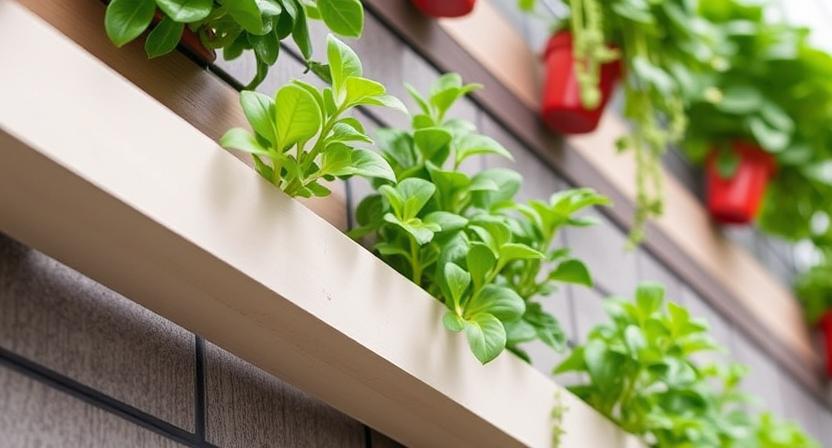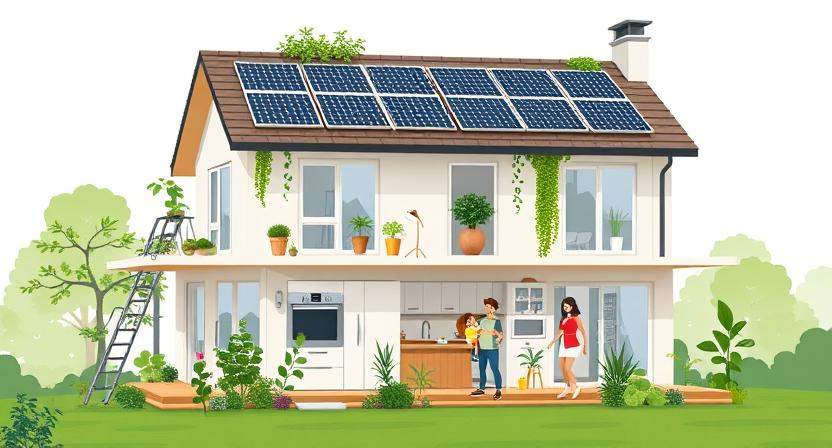Benefits of Vertical Gardens
Vertical gardens offer numerous benefits for both individuals and communities. One of the key advantages is their ability to maximize limited space, making them ideal for urban environments or areas with little room for traditional gardens. This accessibility allows more people to engage in gardening and experience the therapeutic aspects of nurturing plants, even in the absence of a large backyard.
In addition to their space-saving qualities, vertical gardens also contribute to improved air quality by absorbing carbon dioxide and releasing oxygen. This not only enhances the aesthetic appeal of indoor and outdoor spaces but also creates a healthier environment for occupants. Furthermore, vertical gardens can serve as a natural sound barrier, helping to reduce noise pollution and create a more peaceful atmosphere in busy urban settings.
Choosing the Right Plants for Your Vertical Garden
When selecting plants for your vertical garden, it is essential to consider the specific conditions of your space. Factors such as light exposure, temperature, and humidity levels will play a crucial role in determining which plants will thrive in your vertical garden. Additionally, it is important to choose plants that have similar water and maintenance requirements to ensure they can coexist harmoniously in the limited space provided by a vertical garden.
Furthermore, varying the types of plants in your vertical garden can create a visually appealing and dynamic display. Combining different textures, colors, and growth habits can add interest and depth to your vertical garden. Consider incorporating a mix of trailing plants, climbers, and upright varieties to make the most of the vertical space and create a lush and vibrant environment.
Design Considerations for Vertical Gardens
Vertical gardens offer a versatile way to bring greenery into urban spaces, creating a sense of tranquility and connection to nature. When designing a vertical garden, it is crucial to consider the overall aesthetics and functionality of the space. Choosing the right location for your garden is essential, as factors such as sunlight exposure and access to water can greatly impact the success of your vertical garden. Additionally, selecting the appropriate plants that thrive in vertical environments is key to ensuring the longevity and vibrancy of your garden.
Incorporating elements such as trellises, modular planters, and irrigation systems can help maximize the potential of your vertical garden and create a visually stunning display. The layout and arrangement of plants should be thoughtfully planned out to create a cohesive and harmonious design. By carefully considering factors such as plant size, color, texture, and growth patterns, you can create a vertical garden that not only enhances the aesthetic appeal of your space but also promotes biodiversity and sustainability.
Vertical Garden Systems: DIY vs. Pre-Made
When considering vertical garden systems, one key decision that needs to be made is whether to opt for a do-it-yourself (DIY) approach or to purchase a pre-made system. DIY vertical gardens offer the flexibility to customize the design and size of the garden to suit specific needs and preferences. This hands-on approach can also be a rewarding project for those who enjoy gardening and crafting. On the other hand, pre-made vertical garden systems are convenient options for those who want a ready-to-use solution without the hassle of designing and assembling the structure themselves.
Each option has its own set of advantages and considerations. DIY vertical gardens allow for creativity and personalization, but they also require careful planning and execution to ensure the system is well-built and functional. Pre-made systems, on the other hand, offer convenience and often come with comprehensive instructions for easy setup. The decision between DIY and pre-made vertical garden systems ultimately depends on individual preferences, available time, and level of expertise in gardening and construction.
Watering and Maintenance Tips for Vertical Gardens
Vertical gardens require regular watering to ensure the health and vibrancy of the plants. The key to successful watering is to monitor the moisture levels consistently and adjust the frequency based on the specific needs of the plants. Overwatering can lead to root rot and other issues, while underwatering can cause the plants to wilt and die. It is essential to strike a balance and provide just the right amount of water to keep the plants thriving.
In addition to watering, regular maintenance is crucial for the upkeep of vertical gardens. This includes pruning, fertilizing, and keeping an eye out for any signs of pests or diseases. By staying proactive with maintenance tasks, gardeners can prevent problems before they escalate and ensure that their vertical garden continues to flourish. Regularly inspecting the plants for any abnormalities and addressing them promptly will help maintain a healthy and beautiful vertical garden.
Lighting Requirements for Vertical Gardens
Light is a vital factor in the success of vertical gardens. Most plants require adequate sunlight to thrive and grow. When planning a vertical garden, it is essential to consider the location and orientation of the garden to ensure plants receive enough light for photosynthesis.
Insufficient light can lead to stunted growth, yellowing leaves, and overall poor health of plants. To address this, artificial lighting can be used to supplement natural light in indoor vertical gardens. LED grow lights are a popular choice as they provide the specific spectrum of light needed for plant growth without producing excessive heat. Proper lighting will not only promote healthy plant growth but also enhance the overall visual appeal of the vertical garden.
Optimizing Space with Vertical Gardens
One of the most significant advantages of vertical gardens is their ability to optimize space effectively. By growing plants upwards instead of outwards, vertical gardens allow for more greenery in limited areas such as small balconies, patios, or even indoor spaces. This vertical approach to gardening is especially beneficial in urban environments where space is a premium, making it possible for individuals to enjoy the benefits of having a garden even in compact living quarters.
Additionally, vertical gardens provide a creative solution for those looking to maximize their gardening potential without sacrificing living space. By utilizing vertical surfaces like walls or fences, individuals can transform unused areas into flourishing green spaces. This not only adds visual interest to the environment but also contributes to a sense of well-being and connection to nature, even in densely populated areas.
• Vertical gardens optimize space effectively by growing plants upwards
• Ideal for limited areas like small balconies, patios, or indoor spaces
• Especially beneficial in urban environments where space is a premium
• Allows individuals to enjoy the benefits of having a garden in compact living quarters
Vertical gardens offer a creative solution for maximizing gardening potential without sacrificing living space. By utilizing vertical surfaces such as walls or fences, unused areas can be transformed into flourishing green spaces. This not only adds visual interest to the environment but also contributes to a sense of well-being and connection to nature even in densely populated areas.
Vertical Gardens as a Sustainable Food Source
Vertical gardens have gained popularity not only for their aesthetic appeal but also for their ability to provide a sustainable source of fresh produce. By growing fruits, vegetables, and herbs in vertical spaces, individuals can reduce their reliance on store-bought produce and enjoy the satisfaction of harvesting their own food. This practice promotes self-sufficiency and a deeper connection to the food we consume.
In addition to fostering a more sustainable food source, vertical gardens can also help combat food insecurity in urban areas. These gardens can be easily set up in smaller spaces, making them accessible to individuals living in apartments or in crowded city environments where traditional gardening may not be feasible. By growing food locally, vertical gardens can contribute to a more resilient food system and reduce the carbon footprint associated with transporting produce from distant farms to urban centers.
Vertical Gardens in Urban Environments
Urban environments present unique challenges for greening initiatives due to limited space and high population density. Vertical gardens offer a creative solution to this problem by utilizing vertical wall space to introduce greenery into urban landscapes. By incorporating plants into vertical structures, cities can increase green spaces, improve air quality, and enhance aesthetic appeal.
Furthermore, vertical gardens in urban environments can help reduce the urban heat island effect by providing shade and cooling the surrounding area. These green installations also offer habitats for birds and insects, promoting biodiversity in otherwise concrete-dominated cities. Overall, vertical gardens play a crucial role in transforming urban spaces into more sustainable and liveable environments for residents and wildlife alike.
Vertical Gardens and Air Quality Improvement
Vertical gardens play a significant role in improving air quality by absorbing carbon dioxide and releasing oxygen through the process of photosynthesis. The plants in vertical gardens also help filter out harmful air pollutants such as volatile organic compounds (VOCs) and particulate matter, contributing to a cleaner and healthier environment. By incorporating a variety of plants known for their air-purifying properties, vertical gardens can effectively mitigate indoor and outdoor air pollution, enhancing the overall air quality in urban spaces.
Furthermore, the presence of vertical gardens in urban areas can help combat the phenomenon of the urban heat island effect, where cities experience higher temperatures due to the abundance of concrete and asphalt surfaces. By shading buildings and absorbing heat through evapotranspiration, vertical gardens assist in cooling the surrounding environment, reducing energy consumption associated with air conditioning systems. This not only leads to improved air quality but also fosters a more sustainable and comfortable urban living environment.
Vertical Gardens and Noise Reduction
Noise pollution is a prevalent issue in urban environments, affecting the well-being of residents. Vertical gardens, with their ability to absorb sound waves and act as barriers to reduce noise transmission, offer a natural solution to mitigate the impact of unwanted noises. The dense foliage of vertical gardens not only creates a visual barrier but also helps in absorbing and deflecting sound, making them an effective tool in reducing noise pollution in urban areas.
By strategically placing vertical gardens in outdoor spaces, such as along busy streets or near highways, the impact of traffic noise and other ambient sounds can be significantly reduced. The plants’ leaves and branches help to break up sound waves, absorbing noise and creating a more peaceful environment for individuals living and working in noisy urban settings. Vertical gardens can play a vital role in enhancing the quality of life in urban areas by providing a natural and aesthetically pleasing way to combat noise pollution.
Vertical Gardens and Mental Health Benefits
Engaging with nature has long been recognized as beneficial for mental health, and vertical gardens offer a unique way to bring the healing power of plants into urban spaces. The act of tending to a vertical garden, whether it’s watering, pruning, or simply observing the plant’s growth, can be a calming and meditative practice that helps reduce stress and anxiety levels.
In addition, the presence of greenery in living or working environments has been shown to have a positive impact on mood and overall well-being. Vertical gardens not only add visual appeal to a space but also create a sense of connection to nature, which can enhance feelings of relaxation and tranquility. By incorporating vertical gardens into urban landscapes, individuals have the opportunity to reap the mental health benefits that come with surrounding oneself with plants.
Vertical Gardens and Community Building
Vertical gardens have the remarkable ability to bring communities together through a shared love of gardening and green spaces. When individuals come together to tend to a vertical garden, they not only cultivate plants but also cultivate relationships and a sense of belonging. The act of working side by side, whether it be planting, watering, or harvesting, fosters a sense of camaraderie and collaboration among community members.
Furthermore, vertical gardens provide a platform for shared knowledge and skill-building within the community. As individuals with varying levels of gardening experience come together to care for the vertical garden, there is an opportunity for learning and exchanging tips and tricks. This shared learning experience not only enhances the success of the vertical garden but also strengthens the ties that bind community members together.
Vertical Gardens and Energy Efficiency
Vertical gardens play a crucial role in enhancing the energy efficiency of buildings. By providing an additional layer of insulation, vertical gardens help in reducing heat gain during summers and heat loss during winters. This natural insulation not only regulates the indoor temperature but also decreases the reliance on heating and cooling systems, thereby lowering energy consumption and associated costs.
Moreover, the evapotranspiration process that occurs within vertical gardens helps to cool the surrounding air, creating a microclimate that can reduce the need for air conditioning in urban environments. This cooling effect can contribute to a decrease in energy usage, particularly during hot summer months. Overall, integrating vertical gardens in building design can lead to improved energy efficiency, reduced carbon footprint, and increased sustainability in urban landscapes.
Vertical Gardens and Biodiversity
Vertical gardens play a crucial role in enhancing urban biodiversity by providing habitats for a variety of plant species, insects, and birds. The vertical structure of these gardens creates diverse microclimates, attracting a wide range of flora and fauna that contribute to the overall ecosystem health in urban environments. By incorporating a mix of native plant species and flowers that attract pollinators, vertical gardens help support and promote biodiversity in heavily urbanized areas.
In addition to supporting plant and animal life, vertical gardens also aid in increasing biodiversity by creating green spaces within concrete jungles. These vertical landscapes offer opportunities for different species to thrive, fostering a more balanced and resilient ecosystem within urban settings. As biodiversity thrives within vertical gardens, it not only enhances the aesthetic appeal of cities but also contributes to the overall environmental sustainability and health of urban areas.
Vertical Gardens and Climate Change Mitigation
Vertical gardens have emerged as a promising solution to mitigate the impacts of climate change in urban environments. By utilizing vertical space to grow plants, these gardens help reduce the urban heat island effect, lower greenhouse gas emissions, and improve air quality. The plants in vertical gardens absorb carbon dioxide, release oxygen, and provide shade, cooling the surrounding area and reducing energy consumption for air conditioning.
In addition to their role in reducing carbon emissions, vertical gardens can also help capture rainwater and reduce stormwater runoff in cities. This can mitigate the effects of flooding, erosion, and water pollution caused by heavy rainfall events, which are becoming more frequent due to climate change. By incorporating vertical gardens into urban design, cities can take a proactive approach to adapt to and combat the challenges posed by a changing climate.
Vertical Gardens and Food Security
Food security is a critical issue facing communities around the world, with many facing challenges in accessing fresh and nutritious produce. Vertical gardens offer a sustainable solution to this problem by enabling individuals to grow their own fruits, vegetables, and herbs in limited spaces. By incorporating vertical gardens into urban areas, food can be produced locally, reducing the dependency on expensive and environmentally damaging food transportation systems.
Vertical gardens not only provide a source of fresh produce but also empower individuals to take control of their food supply. In times of economic instability or disruptions to food supply chains, having a vertical garden can ensure a reliable source of food for households. By promoting self-sufficiency and reducing reliance on external sources for food, vertical gardens play a vital role in enhancing food security for individuals and communities.
Vertical Gardens and Aesthetics
Adding a vertical garden to your living space can instantly elevate the aesthetics of the area. The lush greenery cascading down the walls creates a visually stunning focal point, transforming an ordinary space into a vibrant and inviting oasis. The variety of plant shapes, textures, and colors available for vertical gardens allow for endless possibilities in creating a personalized and unique aesthetic that suits your style and preferences.
Furthermore, the vertical dimension of a garden opens up new design opportunities to play with vertical lines and create visual interest in a space. By incorporating vertical gardens into your design scheme, you can introduce a dynamic element that adds depth and dimension to the overall look of your environment. Whether complementing a modern urban setting or softening the edges of a traditional space, vertical gardens offer a versatile and visually appealing solution to enhance the aesthetic appeal of any area.
Vertical Gardens and Education
Vertical gardens have become a valuable educational tool in schools and community centers around the world. These green installations provide an interactive way for students to learn about plant biology, environmental conservation, and sustainable practices. By tending to the vertical gardens, students are able to gain hands-on experience in nurturing living organisms and understanding the importance of green spaces in urban environments.
Furthermore, vertical gardens also offer opportunities for interdisciplinary learning, as they seamlessly blend science, math, and art concepts. Students can explore topics such as photosynthesis, water conservation, and aesthetics through the lens of vertical gardening. By engaging with these gardens, students not only develop a deeper appreciation for nature but also cultivate a sense of responsibility towards the environment.
Vertical Gardens and Economic Benefits
Vertical gardens offer a myriad of economic benefits that can positively impact individuals, communities, and even entire cities. One significant advantage is the potential for increased property value in urban areas where green spaces are limited. The aesthetic appeal of vertical gardens can attract more customers to businesses, leading to higher foot traffic and improved sales. Additionally, vertical gardens can help reduce energy costs by providing natural insulation for buildings, thus lowering heating and cooling expenses for both residential and commercial properties.
Furthermore, the implementation of vertical gardens can create new job opportunities in sectors such as landscaping, urban planning, and agriculture. As the demand for sustainable solutions continues to rise, there is a growing need for professionals with expertise in vertical gardening techniques. This can stimulate economic growth and innovation within communities while promoting environmental stewardship and social responsibility.




